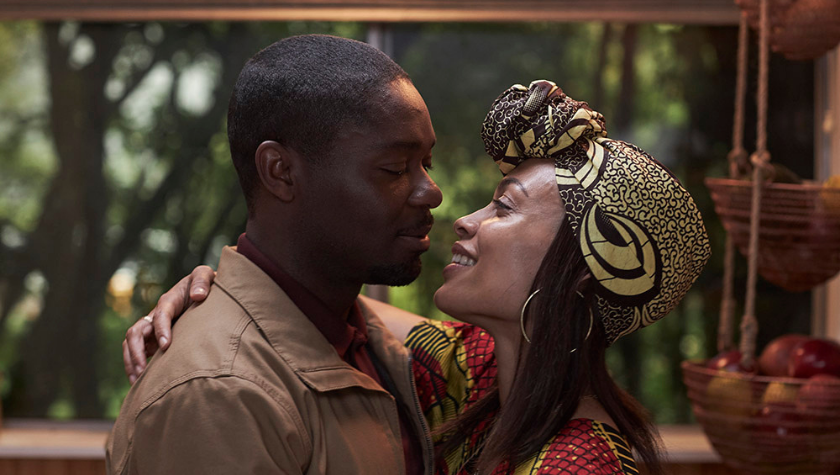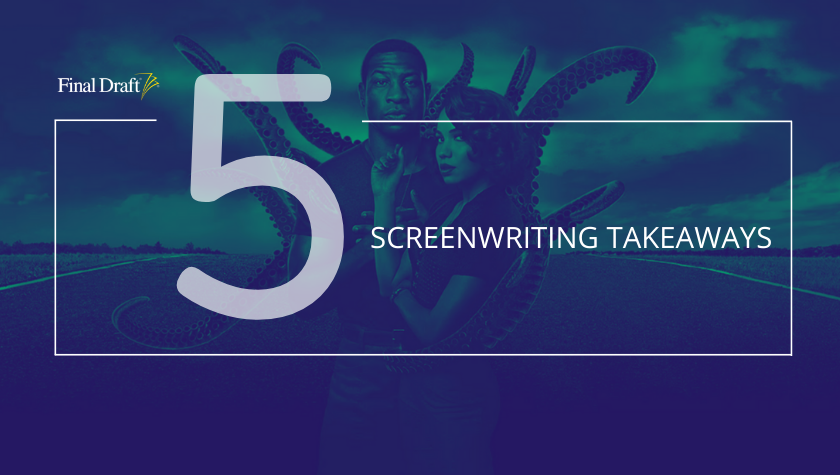5 Screenwriting Takeaways: Alex Garland's 'Men' is more than meets the eye
June 8, 2022
Men is the latest outing from filmmaker Alex Garland (Ex Machina, The Beach). The reviews of the film have been all over the board and some less than kind, but Garland has absolutely made a film worth talking about. It’s also worth much more than a surface examination of the overwhelming (and shocking) imagery that accompanies the film.
Before we dive into spoilers, the basic premise is a good one for a body horror film: a woman (Jessie Buckley playing the determined Harper) decides to escape to a stately house in the English countryside to heal after a very traumatic event with her now-deceased husband. As one may guess, the house is not so healing.
Without further ado, here are 5 Screenwriting Takeaways from Men and plenty of spoilers ahead, so this article is best consumed AFTER you see the movie.
1. Mythology as Source Material
Garland leans heavily on mythology in this movie, something unfortunately many critics have overlooked. B stars Jessie Buckley and Rory Kinnear have given an incredible interview that dives deep into what the team thought about while making the movie. Garland has stated that he’s been obsessed with the Sheela na gig (a symbol found in Irish architecture). The symbol is a woman with an exaggerated vulva. It was thought to have been used to help ward off death.
Garland also used much symbolism of The Green Man and the film’s co-star Rory Kinnear plays a version of The Green Man himself. The Green Man’s origins are unknown but have been seen throughout ancient culture, most often representing rebirth. Garland is said to have become so obsessed with both symbols that he has been trying to figure out how to incorporate them into a script for 15 years.
The symbols are ever-present in the movie and Buckley and Kinnear are said to have started noticing the symbols in architecture everywhere once they signed onto the movie. It’s an inspiration to see something from history and myth come to life so vividly under Garland’s vision.
2. Meeting Your Monsters
Jessie Buckley has said the use of symbolism of both the Sheela na gig and The Green Man give her character Harper a chance to meet her monsters. It’s true that the symbols become representative of Harper’s traumas. Harper is haunted by her now-dead husband in the film. Her husband fell to his death from a balcony above their apartment after a brutal fight between the pair. Harper is now grappling with how much responsibility she has in that death. But Buckley puts it best in her interview with Inverse: “It doesn't follow the horror trope where the damsel in distress slays the dragon, you know? She meets the dragon, and she still has to live with the thing. She's come to learn how to live with the thing and learn from the thing.”
3. Open to Interpretation
The filmmaking team has said that the interpretation of the symbolism of the movie is meant to be a catalyst. To start conversations instead of putting a period on them. There is birth and death imagery throughout the movie and it absolutely feels like Garland is musing on grief throughout-- the mourning of a relationship, the loss of valid communication between men and women, the shadow of self-harm, and doing harm to others. There’s much to explore and ask of oneself and others after viewing the piece. Some of the symbols, despite their ancient origins, also could not be more timely. When Ireland was trying to pass an abortion referendum a few years back, Irish women used the Sheela na gig as their rallying cry and mascot.
4. Are All Men the Same?
Garland seems to pose this question throughout the film. It’s also one of the greatest tricks of Kinnear, who deftly slips between The Green Man, a predatory vicar, and a slightly daffy landlord. He does so with such trickery that it might take audiences a beat to notice all roles are inhabited by the same actor. The portrayals allow the audience to see the world through Harper’s traumatized eyes. Just as she is haunted by the death of her significant other, and no doubt experiences delusions of grief, the audience is right there with her witnessing the guilt, shock, predation, and general ickiness these men are hurling at her, instantly rooting for her to survive the horrendous reality of their sameness.
5. Genre-Bending Awe
Garland embraces all types of genres here, creating a jaw-dropping wild ride. This is body horror wrapped in Euro-gothic influences with a side of Hot Fuzz style insanity. There was a fair amount of laughter in the screening this writer witnessed, and that’s justified. The movie is strange enough that you'll enjoy an uncomfortable laugh or two, but in the next instant Garland will drop some Cronenberg-esque imagery and you'll be equally horrified. At the very least, you will never be bored as they consume the vast green countryside and bloody horror in equal parts.
Final Takeaway: For a wild ride that will also make you ponder society’s continued problematic treatment of women, go see A24’s Men screening in theaters now.
Written by: Lindsay Stidham
Lindsay holds an MFA in screenwriting from the American Film Institute. She has overseen two scripts from script to screen as a writer/ producer. SPOONER, starring Matthew Lillard (SLAMDANCE), and DOUCHEBAG (SUNDANCE) both released theatrically. Most recently Lindsay sold PLAY NICE starring Mary Lynn Rajskub. The series was distributed on Hulu. Recent directing endeavors include the Walla Walla premiering (and best screenplay nominated) TIL DEATH DO US PART, and the music video for Bible Belt’s Tomorrow All Today. Lindsay is currently working on an interactive romcom for the production company Effin' Funny, and a feature film script for Smarty Pants Pictures. Lindsay also currently works as an Adjunct Screenwriting Faculty member at USC’s School of Cinematic Arts. You can follow her work here: https://lindsaystidham.onfabrik.com/



